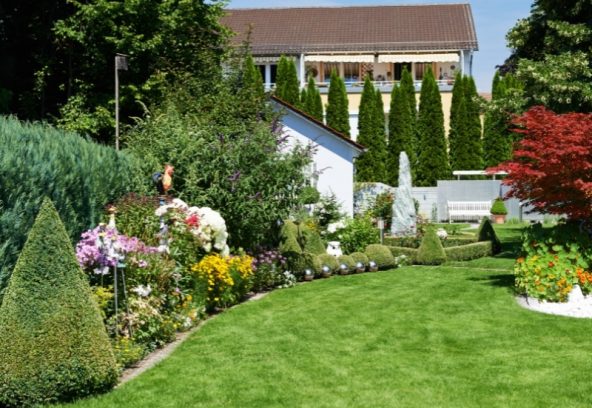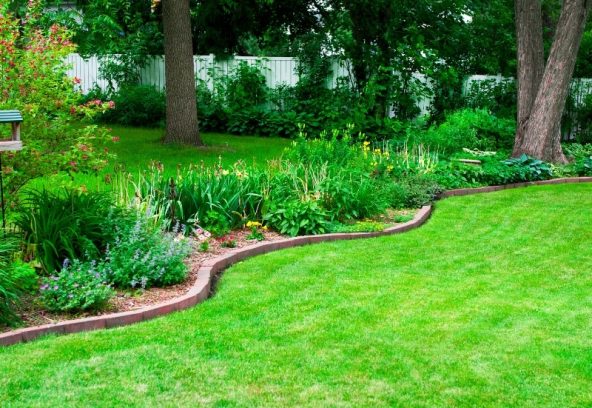
The colder months often expose problems you didn’t know your yard had. From patchy grass to drainage nightmares, winter is when garden issues reveal themselves. If your garden’s looking worse for wear or if you’re unsure what to do next, you may genuinely need landscaping help before things escalate. The combination of unpredictable weather, soil fatigue, and seasonal plant stress makes it hard to maintain outdoor areas alone. Ignoring these warning signs can turn a minor issue into a costly mess. This article outlines clear signs, seasonal triggers, planning strategies, and cost-effective solutions to help you make confident decisions this winter.
What are the signs that you might need landscaping help soon?
Sometimes it’s obvious—other times it creeps up on you. Here are a few red flags:
- The lawn’s patchy or pale appearance often indicates poor root health or a lack of nutrients, especially when the topsoil has thinned or compacted due to foot traffic. A healthy lawn should show colour even in winter.
- Water’s not draining properly: Pools or muddy patches suggest soil compaction or grading problems, which can lead to root rot or mosquito breeding if left untreated.
- Garden beds are shifting or collapsing: Erosion or inadequate edging could be to blame, particularly after heavy rains when soil becomes loose and loses its structure.
- Plants are failing for no reason: If nothing’s thriving, poor soil or exposure might be affecting everything, especially if you’re using non-native species not suited for local winters.
These signs point to deeper issues. Don’t wait until spring—addressing them now gives your garden a stronger recovery window.
What winter problems cause people to need landscaping help?
Winter packs a punch in more ways than one. Here’s what you might be up against:
- Frostbite on plants: Sudden temperature drops can kill roots or burn leaves, especially for tropical species or those planted in exposed areas.
- Excess runoff: Heavy rains can create channels, shift mulch, and erode soil, especially on sloped yards without proper terracing or drainage control.
- Weed dominance: Cold-hardy invaders thrive while native plants slow down, often overtaking garden beds and stealing nutrients if left unchecked.
- Garden sinkage: Saturated soil becomes compacted or uneven, leading to lumpy turf and unstable pavers that create tripping hazards and poor aesthetics.
One effective way to handle this is to consider reliable landscaping support that aligns with your goals, allowing professionals to assess these risks and intervene before they worsen.
Are delays more likely when you suddenly need landscaping help?
They sure are—and winter compounds the issue. What you’ll typically see includes:
- Booked-out schedules: Good landscapers fill their calendars fast during problem seasons, often working weeks in advance. Last-minute bookings might land outside your ideal timeline.
- Limited dry days: Wet conditions narrow the time available to do hardscape or soil work, delaying everything from turfing to retaining wall installations.
- Slower supplier delivery: Material wait times can stretch out due to demand or weather-related backlogs, especially for custom orders such as sandstone or timber sleepers.
- Emergency pricing: Rush jobs often attract premium rates because they disrupt planned workflows, and the quality may suffer due to rushed assessments or reduced prep time.
Planning now can help you sidestep long waits and keep your budget on track.
How can you plan if you know you’ll need landscaping help?
Planning doesn’t just save you stress—it saves you time and money. Investing in lawn care landscaping for winter maintenance makes all the difference. Here’s how to get started:
- Book quotes early: Reach out before the winter peak to secure your time and budget. Landscapers appreciate early bookings and may offer better pricing.
- Map problems: Walk your garden after rain to identify areas with issues, such as pooling or dead zones. Marking these zones helps with accurate quoting.
- Build a flexible plan: Stages such as preparation, installation, and finishing, which can be adjusted to accommodate changing weather conditions. Flexibility allows landscapers to work efficiently despite seasonal conditions.
- Budget for priorities: Focus first on fixing core structural issues, then on aesthetics second. A stable base always comes before the pretties—like fancy garden lights or feature plants.
To avoid costly rework, it’s wise to pair this approach with sustainable garden design strategies, particularly when selecting layout and species.
What’s the best way to get affordable landscaping this winter?

Budget-conscious landscaping isn’t about cutting corners—it’s about choosing well. You can:
- Prioritise low-labour fixes: Mulching, topdressing, or light pruning are affordable and effective, especially when done with recycled organic matter. These options rejuvenate soil without the need for heavy equipment.
- Group small jobs: Combining tasks can reduce setup and labour time across visits. For instance, edging and planting can be completed on the same day to save labour hours.
- Ask for recycled materials: Old pavers or timber can be repurposed to cut costs. Many suppliers offer seconds that are perfectly functional but more budget-friendly.
- Use seasonal plants: Winter-specific flora often comes cheaper and establishes faster. Native shrubs, such as Callistemon and Grevillea, are better suited to handle cold snaps than exotics.
| Cost-Saving Strategy | Benefit | Best Used For |
| Bundling jobs | Reduces total labour hours | Garden tidy-up, minor builds |
| Off-season rates | Offers lower contractor pricing | Winter prep, softscaping |
| Recycled or reclaimed materials | Cuts material spend significantly | Edging, steps, raised beds |
| Low-maintenance plant choices | Limits future upkeep and watering | Native or hardy plants |
These methods help you stretch your budget further while maintaining the integrity of your landscape.
Can DIY projects still be practical if you need landscaping assistance?
Can DIY projects still be practical if you need landscaping assistance? Absolutely—but if you’re unsure how winter changes your garden design approach, a professional is your most reliable partner for achieving the best results.
- Mulching and composting: These are safe, simple jobs that improve soil quality, especially when using green waste or mushroom compost from local suppliers.
- Installing garden beds: Framing raised areas or container setups can be done in a weekend with basic tools and decent timber.
- Laying basic pavers: For small paths, a well-levelled base and patience can yield tidy results. Avoid complex curves or cuts if you’re new to paving.
- Planting natives: With some guidance, you can select and place suitable cold-season plants, such as Lomandra or Dianella, which require minimal upkeep.
Final thoughts
Seasonal landscaping isn’t just about looks—it’s about protecting the bones of your outdoor space. When signs appear or winter throws a curveball, don’t hesitate to take action. Whether you’re getting expert help or handling parts of it yourself, what matters is doing it before minor issues grow roots. If you’re still unsure where to start, you can find out how Bespoke Landscaping Sydney can support your project with clear options and a local team who understands Sydney soil, weather, and timing.





